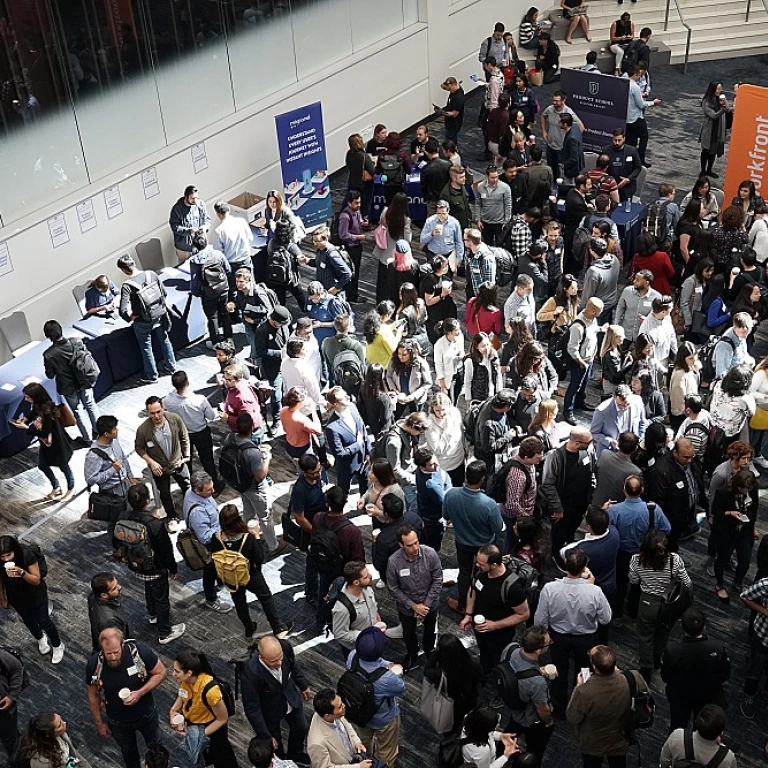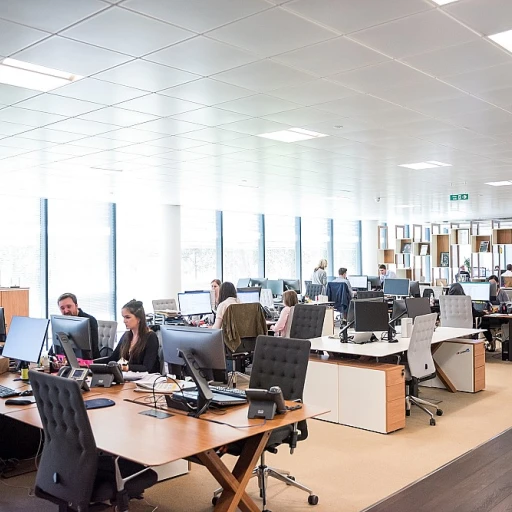
Understanding the Growth Mindset
Embracing a Culture of Continuous Learning and Growth
In today's rapidly evolving world, understanding the concept of a growth mindset is pivotal for leaders aiming to cultivate a progressive culture within their organizations. A growth mindset is not just a trendy catchphrase; it embodies the fundamental belief that talents and abilities can be developed through dedication, continuous learning, and resilience. This perspective contrasts with a fixed mindset, where skills and intelligence are seen as static traits. Leaders play a crucial role in shaping this mindset culture by fostering an environment that encourages learning and development among team members. By actively promoting a culture of continuous improvement, leaders can create opportunities for employees to excel, thus driving success and innovation within the organization. Effective leaders understand that providing learning opportunities is key to enhancing the potential of their teams. Feedback is another essential component of cultivating a growth mindset. Constructive feedback allows team members to identify areas for improvement, learn from their mistakes, and ultimately achieve long-term success. By encouraging open communication, leaders can build trust and inspire employees to embrace challenges as avenues for growth. Creating a mindset that celebrates problem solving and learning development is not without its challenges. Organizations must ensure that they consistently nurture an environment that values diversity of thought and encourages employees to voice their ideas without fear of judgment. This empowerment can lead to productive collaboration within teams and inspire innovative solutions. Ultimately, leaders create and sustain a growth mindset culture by committing to leadership development and offering ample opportunities for personal and professional improvement. By doing so, they set the stage for a resilient organization that thrives amidst adversity and continually seeks new avenues for growth. For those seeking to enhance their leadership skills, engaging in a master leader course can be a beneficial step towards becoming a more effective leader in nurturing this mindset.Leadership's Role in Promoting a Growth Mindset
Leadership as Catalysts for Growth Mindset
Leaders play an instrumental role in shaping and fostering a growth mindset within organizations. Their influence extends beyond mere managerial tasks, as they act as the architects of a culture that values continuous learning and improvement.
A key aspect of leadership's role is modeling the desired mindset. Leaders must exhibit a commitment to learning and be open to development opportunities. This sets a precedent for team members, encouraging them to embrace challenges and seek personal and professional growth. By promoting an ethos of continuous learning, leaders nurture an environment where constructive feedback and open communication are the norm.
Leaders must also foster a culture that supports innovation and collaboration. By facilitating learning opportunities and highlighting the benefits of a growth mindset, they can inspire employees to view setbacks as opportunities for learning and development rather than failures. This shift in perspective is critical in cultivating a mindset culture that thrives on continuous improvement.
Moreover, leaders are responsible for empowering their teams to develop problem-solving skills and embrace change. By doing so, they enable employees to contribute effectively to the organization's success, thereby creating a sustainable model for leadership development and succession planning.
A vital element in promoting a growth mindset is the personalized development plans for employees. Leaders should focus on recognizing individual strengths and providing tailored growth opportunities. This strategy not only addresses the unique aspirations of each team member but also aligns them with the organization's long-term goals, enhancing overall success.
Creating an Environment for Growth
Fostering an Environment of Growth and Learning
Creating an environment conducive to growth and development is crucial in nurturing a growth mindset culture within organizations. Leaders play a pivotal role in this process, setting the stage for learning, innovation, and improvement. Below are several strategies that can help leaders create such an environment: 1. Encourage Open Communication: Leaders should foster a culture where open communication is the norm. This means encouraging team members to share ideas and feedback freely. Open communication helps in identifying areas for improvement and fosters a sense of inclusion, contributing to the growth of both individuals and the team as a whole. 2. Embrace Continuous Learning: A commitment to continuous learning is essential for cultivating a growth mindset. Leaders can promote this by providing ample learning opportunities, such as workshops, seminars, and access to online courses. Encouraging employees to seek new experiences and knowledge helps in developing their skills and prepares them for future challenges. 3. Offer Constructive Feedback: Feedback is a powerful tool for growth and development. Leaders should provide constructive feedback that focuses on areas of improvement rather than highlighting mistakes. This not only motivates employees but also aids in their professional development, fostering a culture of continuous improvement. 4. Promote Innovation and Problem Solving: Encouraging innovation and problem-solving within teams fosters creativity and new ideas. Leaders can support this by creating an environment where team members feel safe to experiment and take calculated risks. This mindset leads to the discovery of new solutions and growth opportunities. 5. Recognize and Reward Growth: Recognizing and rewarding efforts toward growth and learning can have a significant impact. Leaders should highlight achievements and milestones, which not only motivates individuals but also sets a standard for others to follow. By implementing these practices, leaders create an atmosphere that nurtures a growth mindset, aligning with effective succession planning. This proactive approach prepares organizations for long-term success by ensuring the continuous development of leadership qualities among team members.Identifying and Developing Future Leaders
Identifying and Preparing Future Innovators
When organizations strive to build and sustain a growth mindset culture, identifying and developing future leaders becomes pivotal. Cultivating leaders who are not only competent today but also capable of navigating future challenges requires a focused approach towards succession planning. Creating a robust pipeline of future leaders involves a blend of assessment, mentorship, and continuous learning. Here are several strategies to consider:- Fostering a Culture of Learning: Encourage a learning environment where growth and innovation thrive. Organizations should offer continuous learning opportunities that align with business goals and individual aspirations. This will inspire team members to enhance their skills and contribute to the organization’s growth.
- Identifying Potential: Look for employees who demonstrate a growth mindset. Consider those who show resilience in the face of setbacks, are open to feedback, and seek improvement. These characteristics often predict success in leadership roles.
- Structured Development Programs: Implement leadership development programs that include personalized mentoring and coaching. By providing constructive feedback and real-world problem-solving experiences, future leaders can hone their decision-making and innovation capabilities.
- Promoting Continuous Improvement: Leaders should foster an environment where continuous feedback and open communication are the norms. This not only helps in skill development but also encourages a mindset culture that supports growth and development across all levels of the organization.
- Providing Diverse Opportunities: Rotate potential leaders through various roles and challenges. This exposure helps them understand different aspects of the organization and broadens their perspectives—key components in developing a well-rounded leadership team.
Challenges in Succession Planning
Overcoming Obstacles in Leadership Transition
Succession planning is crucial for organizations aiming to foster continuous growth and innovation. However, several challenges can hinder the process, particularly in cultivating a growth mindset culture. One significant obstacle is shifting from a fixed mindset to a growth mindset within the leadership group. Leaders need to embrace the idea that skills can be developed through dedication and hard work, creating a more resilient organizational culture. Additionally, achieving buy-in from team members is critical. Employees accustomed to traditional methods may resist new ideas and continuous learning. Leaders can mitigate this resistance by promoting open communication and offering constructive feedback, which creates opportunities for improvement and development. Organizational culture can also play a substantial role in the success of succession planning. A mindset culture encouraging innovation and problem-solving is vital. Leaders need to intentionally create an environment where employees feel safe to experiment, learn from mistakes, and pursue learning opportunities without fear of retribution. Furthermore, lack of consistent leadership development programs can pose a barrier. It’s essential to implement professional development initiatives that focus on long-term growth for both current and aspiring leaders. Developing future leaders requires not only equipping them with technical skills but also nurturing their ability to cultivate a growth mindset among their teams, which ensures sustainable success for the organization. Ultimately, to confront these challenges effectively, organizations must commit to continuous improvement and reassess their strategies regularly. Leaders, employees, and teams should work together towards a common goal of nurturing a mindset culture that supports continuous learning and development, paving the way for a successful leadership transition.Measuring the Impact of a Growth Mindset
Evaluating the Success of a Growth-Oriented Culture
Implementing a growth mindset within an organization can transform its culture and result in significant long-term success. However, effectively measuring the impact of this mindset is crucial to sustain growth and development. Here's how organizations can assess their progress.- Feedback Mechanisms: Regular and constructive feedback is vital for both employees and leaders. This open communication fosters a culture where team members feel valued and motivated to pursue continuous improvement.
- Performance Metrics: Monitor both individual and team development. Organizations should track areas such as innovation, problem-solving capabilities, and professional development achievements.
- Employee Surveys: Gaining insight from employees about the cultural shift towards a growth mindset helps identify challenges and growth opportunities. Encourage honest feedback regarding team dynamics and leadership support.
- Leadership Assessment: Evaluate how leaders are promoting a growth mindset. Leaders should actively create an environment that encourages continuous learning and development, and their effectiveness in this role should be regularly reviewed.
- Recognition and Opportunities: Highlighting success stories within the organization underscores the benefits of a growth mindset. Celebrate achievements and provide new learning opportunities to keep engagement and morale high.












